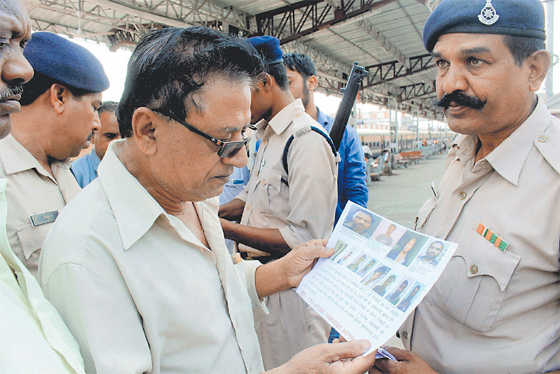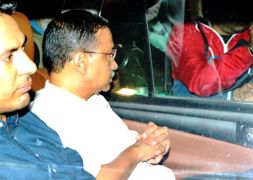
In cold blood: Many encounters in the past have turned out to be fake.
Faizan Mustafa
IT is not the duty of the police officers to kill the accused merely because he is a dreaded criminal. Undoubtedly, the police have to arrest the accused and put them on trial. This court has repeatedly admonished trigger-happy police personnel, who liquidate criminals and project the incident as an encounter. Such killings must be deprecated. They are not recognised as legal by our criminal justice administration system. They amount to state terrorism,” said the Supreme Court in the Om Prakash case.
On July 16, 2016, Justice Madan B Lokur of the Supreme Court in his 85-page judgment on 1,528 encounter killings in Manipur observed: “Scrutiny by the courts in such cases leads to complaints by the State of its having to fight militants, insurgents and terrorists with one hand tied behind its back. This is not a valid criticism since and this is important, in such cases it is not the encounter or the operation that is under scrutiny but the smoking gun that is under scrutiny. There is a qualitative difference between use of force in an operation and use of such deadly force that is akin to using a sledgehammer to kill a fly; one is an act of self-defence while the other is an act of retaliation.” From the video clips which have gone viral, the Bhopal encounter does not look like an act of private defence by the MP police.
Encounters have indeed become a common phenomenon of our criminal justice system. These killings always take place with the prior consent of the highest authority, administrative or ministerial. In the audio records of the Bhopal encounter too we heard someone instructing the killings. What is the modus operandi? The police would take a suspected terrorist into custody without recording his arrest; if the suspected terrorist dies during interrogation where third-degree methods are routinely employed, security forces would deny ever taking the person into custody and instead claim that he was killed during an armed encounter. The police would place weapons on or near the body to suggest the police acted in self-defence and thus stage-manage the encounter. In other cases the police would secure production warrants under which the police are entitled to remove an inmate from the jail and then this terror suspect would be killed in an encounter outside the jail. A jail-break is the third type.
There is nothing new about the Bhopal encounter. The same make and colour of the shoes of those killed in Bhopal and the police is not strange. This also answers why these stupid masterminds of terror continued to roam around together freely and were not fearful of them being identified. It is also wrong to blame the BJP for this kind of incident. Such encounters have been part and parcel of our Republic since at least the 1970s. Not only Muslims, but Hindus and Sikhs also have had a similar fate. It is also not new for the political leadership to take credit for such courageous acts and thus I am fully with Shivraj Singh Chouhan. Congress Chief Minister Vengal Rao of erstwhile Andhra Pradesh had famously boasted that “he has wiped out Naxals from his state”.
During the Punjab insurgency, a large number of suspected militants were eliminated through the encounter killings. KPS Gill contemptuously termed those who tried to get justice in encounter matters as “litigation guns.” The police tried their best to silence these guns of due process such as Jaswant Singh Khalra who had shown the courage to use government crematoria records of just one district to demonstrate that at least 6,000 people were secretly cremated by the police. After several years six policemen were convicted for killing Khalra. The Government of India itself admitted that as many as 2,097 people were secretly cremated in Amritsar alone. In 2000 for the massacre of 36 Sikhs in Chittisinghpura, five suspected militants were killed in an encounter. Subsequent forensic tests showed them to be innocent local villagers. In Kashmir about 8,000 people who were apparently in police custody have similarly been killed.
Legally, what to say of the police, even an ordinary person has the power to kill any person to save his or someone else’s life or property. But just like an ordinary person, the police too have to prove there was a real threat to life or property. Under Section 46 of the Code of Criminal Procedure, if a person resists arrest or attempts to evade arrest, the police may use “all means” to effect the “arrest”. This, the BJP says, gives the police the right to kill. Nothing in this section gives the police a right to cause the death of a person who is not an accused of an offence punishable with death or life imprisonment.
Many encounters in the past have turned out to be fake clearly indicating a misuse of police powers by the State. The NHRC statistics do show that of the almost 2,500 killings in 1993, half turned out to be fake. The NHRC has said there were at least 440 cases of encounter between 2002 and 2008. From 2009 to 2013, another 550 cases in different states were documented. It is shocking that the 2009 judgment of the Andhra Pradesh High Court, where 1,800 encounter deaths were in question, which held that “all encounter deaths are prima facie culpable homicide” and must be investigated, was ex-parte stayed by the apex court. But in 2014 in PUCL v. State of Maharashtra, where 99 Mumbai encounters of 1997-1999 were an issue, the Supreme Court laid down as many as 16 guidelines in cases of encounter and declared them as the law of the land under Article 141. These include the recording in writing of a tip-off about the movement of criminals, mandatory registration of an FIR, a magisterial inquiry under Section 176 of the CrPC, video recording of the post-mortem by two doctors, no out-of-turn promotion or instant gallantry awards to the officials involved, suspension of officials if death occurred by the use of firearms and six monthly reports to be sent to the NHRC on deaths in police firing. The MP Government seems to be in violation of these guidelines/laws.
“The mood and temper of the public in regard to the treatment of crime and criminals is one of the most unfailing tests of the civilisation of any country,” said Winston Churchill. Let raising human rights concerns not be seen as “anti-national acts” as in all such cases it is the “constitutional values” which are at stake rather than values or ideologies of the “terrorists or militants”.
The writer is the Vice-Chancellor of NALSAR University of Law, Hyderabad



























